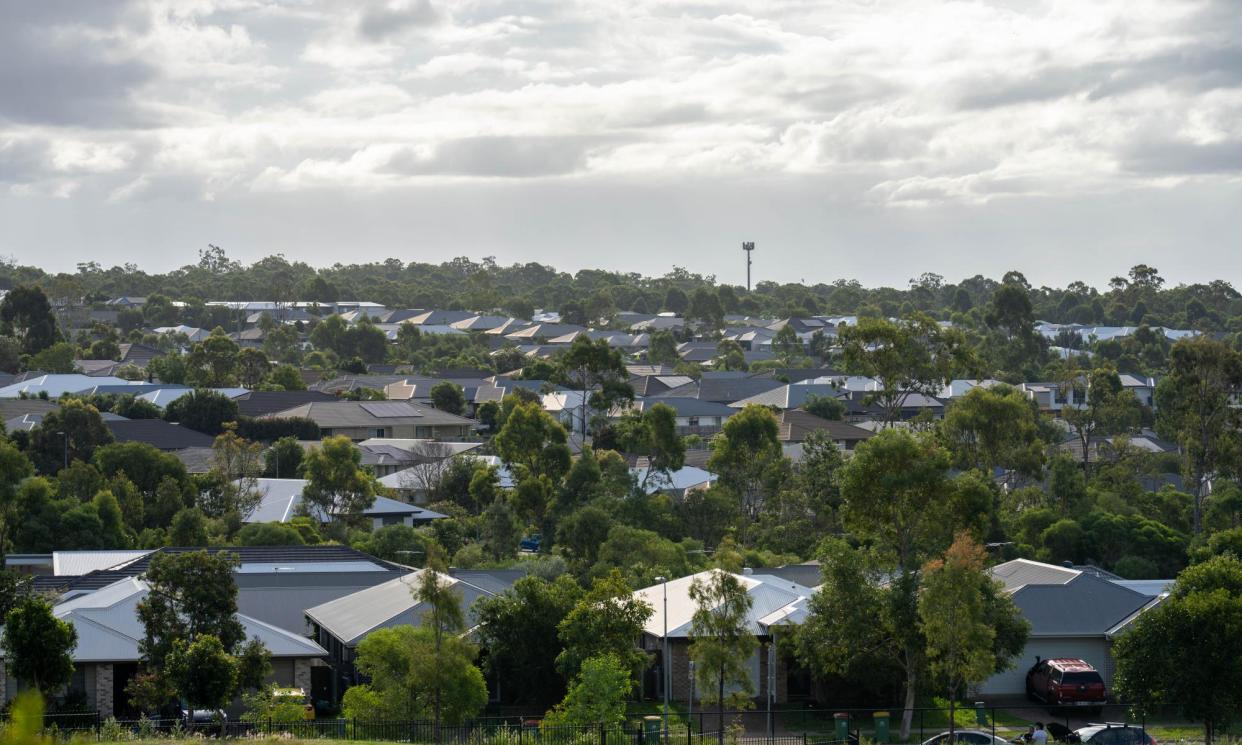Australia’s housing crisis to worsen with ‘significant shortfall in supply’, Labor’s expert council says

Australia’s housing affordability “crisis” will continue to worsen with a “significant shortfall in supply”, according to the government’s own expert council.
In its first-ever state of the housing system report, the National Housing Supply and Affordability Council described Labor’s target of building 1.2m new homes over five years as “suitably ambitious” because it projects only 943,000 will be built in that time.
The report, to be released on Friday, warns that “non-market” social and affordable housing is “forecast to remain low” and the tax system is adding to inequality between those who can and cannot afford home ownership.
Those have been central themes of the Greens and crossbench senators David Pocock and Jacqui Lambie who have called on the government to reform negative gearing and capital gains tax concessions to invest more in social and affordable housing.
The report also cites “the resumption of migration at pace” as one of a number of factors making the long-running housing shortfall “more acute”, which the Coalition has used to argue for creation of a link between the net migration intake and housing completions.
The chair of the council, Susan Lloyd-Hurwitz, said Australia is in “a longstanding crisis, fundamentally driven by the failure to deliver enough housing of all types – from social housing through to market home ownership”.
“Prices and rents are growing faster than wages, rental vacancies are near all-time lows, 169,000 households are on public housing waiting lists, 122,000 people are experiencing homelessness and projected housing supply is very low,” she said.
Lloyd-Hurwitz said the “deep-seated” issues with insufficient supply had become more acute due to the spike in migration, “rising interest rates, skills shortages, elevated construction company insolvencies, weak consumer confidence and cost inflation”.
The report found that housing affordability “deteriorated significantly for mortgage holders” due to interest rate rises. Rents were up 35% since 2020 and 8% in 2023, with a vacancy rate of 1.6% making it increasingly difficult to find a rental home.
“Current market supply of new housing is low,” it said. “Only 172,000 dwellings were completed in 2023 – the lowest annual number of completions in the past decade.”
It noted that social housing has declined as a share of the housing stock for three decades, down from 5.6% in 1991 to 3.8% in 2021.
Over the next six years, net new market housing supply is expected to be 1.04 million dwellings but demand will total 1.08m new households, the report projected.
“There will be a significant shortfall in supply relative to new demand in the 2023–24 financial year and smaller shortfalls in the following two financial years.”
This will add to the “already significant undersupply of housing” and cause “housing affordability is expected to deteriorate further” over the next six years, it said.
“This is not an abstract and theoretical topic. We’re talking about homes, not assets. Access to shelter is a basic human need and right. The lack of a secure home, whether rented or owned, is a source of significant stress for families.”
The report projected 903,000 dwellings will be constructed in the five-year period the Albanese government and national cabinet agreed to a target of 1.2m new homes, with a further 40,000 social and affordable dwellings funded by commonwealth initiatives.
Lloyd-Hurwitz said this is the “existing forecast” but the council is hopeful that states’ moves to remove impediments to supply such as planning reforms “will make a difference”.
The report said current tax settings have “implications for supply and affordability” and “could potentially be better calibrated to support housing supply and affordability”.
The housing minister, Julie Collins, said in a statement the report “lays bare the challenges in Australia’s housing system”.
“But our government understands this challenge also provides us all with an opportunity – to change our housing system. To change direction.”
“The forecast of new home building in the report illustrates the cost of doing nothing. That’s why our government has committed more than $25bn in new housing initiatives over the next decade to help build the homes Australia needs.”

 Yahoo News
Yahoo News 
